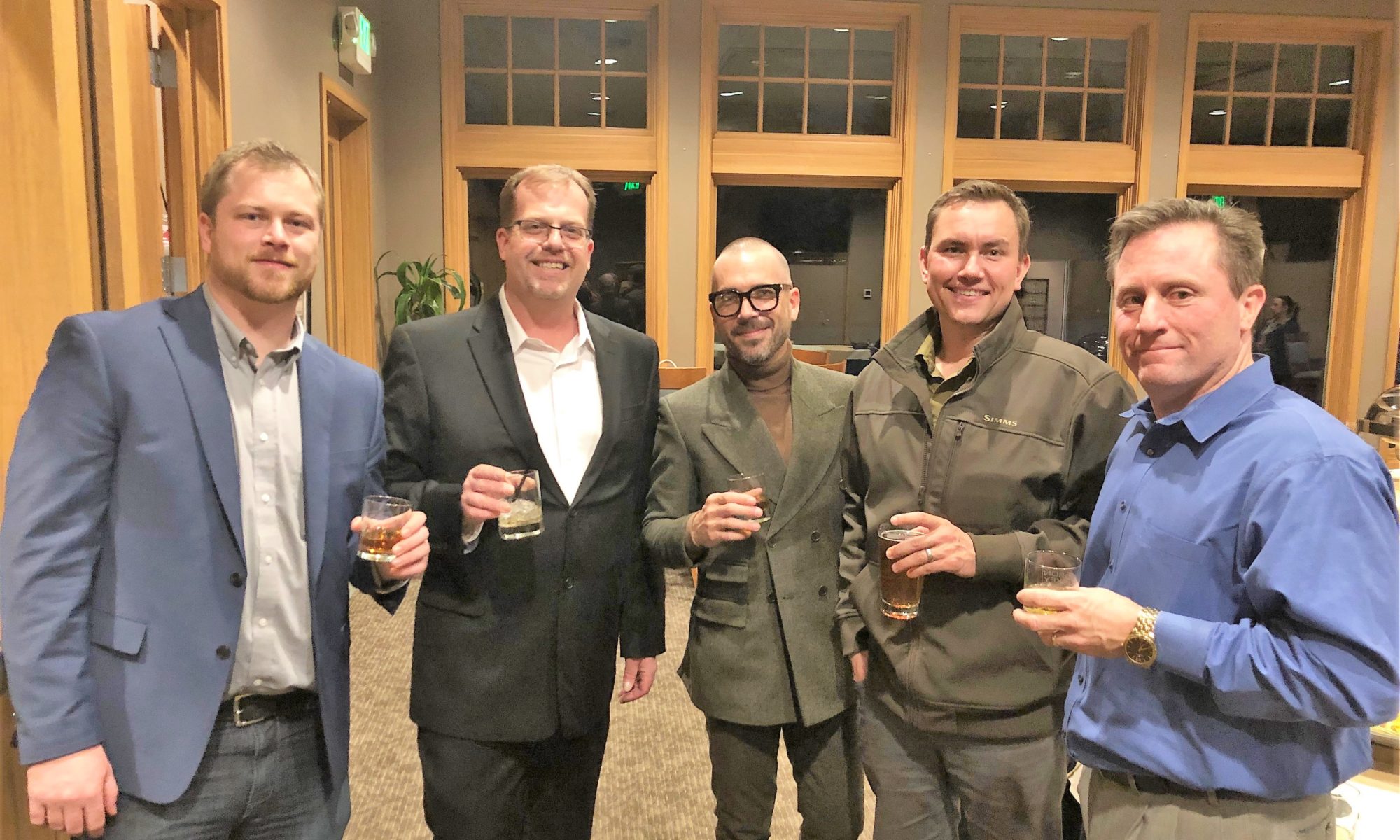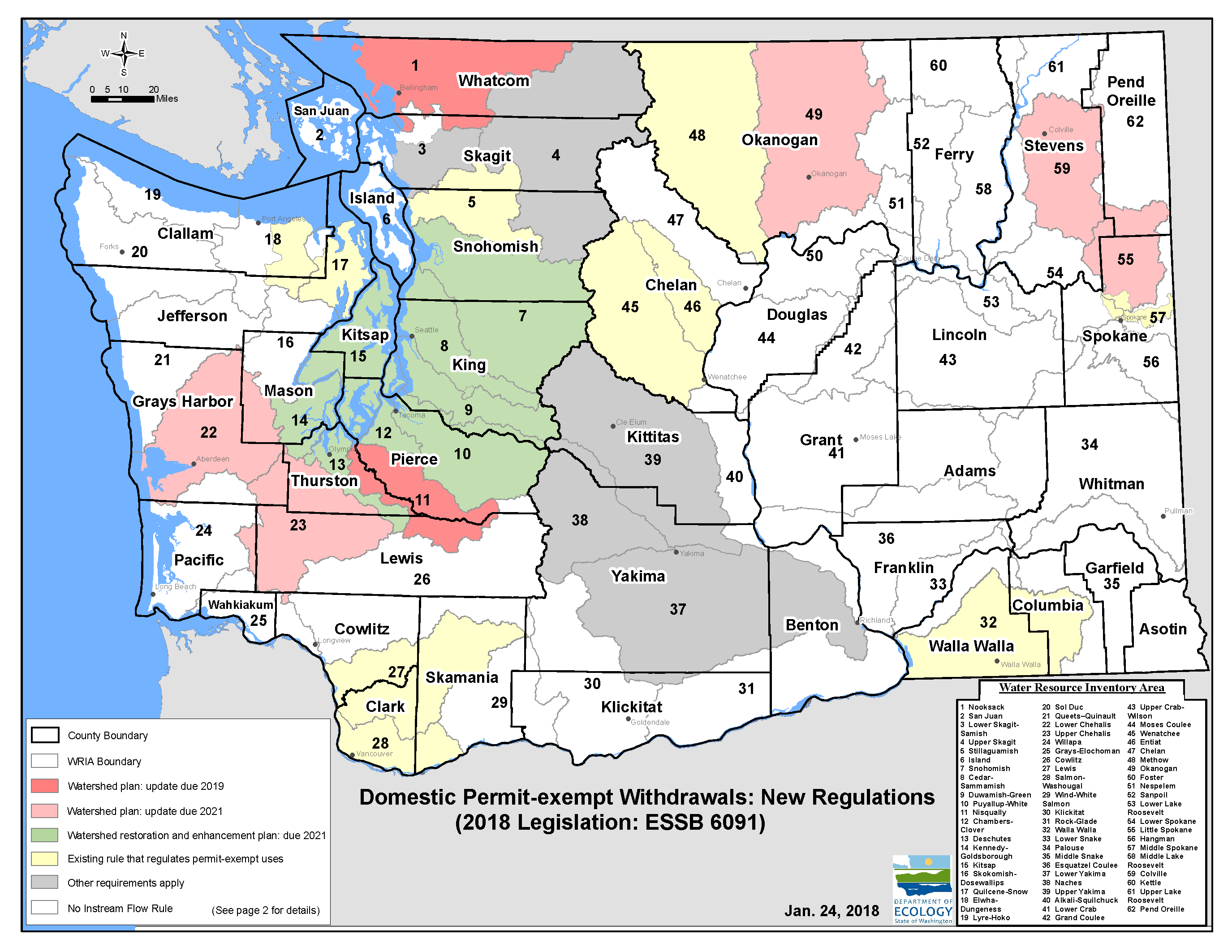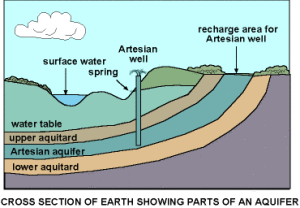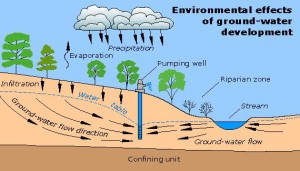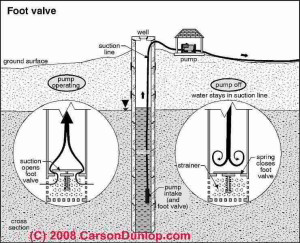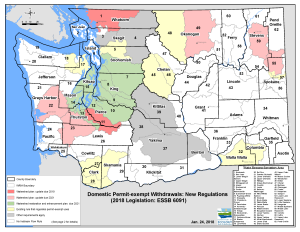What did you miss? Here are the highlights from March 7, 2019.
What was this “Kick Off Event” again?

Every year, we work with our Windermere office to put together an informational and fun evening filled with quality speakers, a few appetizers, and a lot of really good people at the Everett Golf and Country Club.
Sounds good. Who was there?
In addition to the roughly 150 valued clients and colleagues, we had a great line-up of presentations with Gary Cohn, the Superintendent for Everett Public Schools; Cassie Franklin, City of Everett Mayor; and Matthew Gardner, Windermere’s Chief Economist and one of the few economists who can brings a sense of humor to statistics.
Interesting. Who was the opening act?
Gary Cohn kicked off the evening with a focus on kids. He discussed some basic facts and figures to start. Did you know that there are approximately 20,500 students in Everett public schools, with a projected growth of over 9% or another 1,858 students by 2026? He addressed the income disparity in some of our local communities, emphasized how poverty is the single biggest factor that affects children, and noted that unfortunately almost 40% of our students are impacted.
Despite some initially startling numbers, there were many good points. First, graduation rates. The 4-year graduation rate from Everett schools is currently at 95.7% (oh yeah!), up from 81.7% in just 2009! And, he talked at length about how after you adjust for poverty, Everett schools test above the trend line on everything from test scores to life preparedness.
Those numbers are surprisingly good, but where are all those extra students going to go?
The new Tambark Creek Elementary School, on track to open this year in fall 2019. Currently, there are 17 Elementary Schools, 5 Middle Schools, and 4 High Schools. The addition of Tambark Creek brings the district to a total of 27 schools over 39 square miles.
How do we prepare our kids to become future leaders?
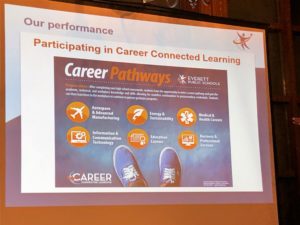 Career Pathways. In 2013, Everett Schools became a K-12 STEM District. Rather than limiting curriculum to the typical Science Technology Engineering and Math, they took it a step further. After completing basic high school requirements, students have the opportunity to enter a career pathway and gain the academic, technical, and workplace knowledge and skills. This will allow them to transfer seamlessly into their next level of schooling, pursue graduate programs, or transition to the workforce.
Career Pathways. In 2013, Everett Schools became a K-12 STEM District. Rather than limiting curriculum to the typical Science Technology Engineering and Math, they took it a step further. After completing basic high school requirements, students have the opportunity to enter a career pathway and gain the academic, technical, and workplace knowledge and skills. This will allow them to transfer seamlessly into their next level of schooling, pursue graduate programs, or transition to the workforce.
What about Everett?
After 14 years, the city of Everett welcomed their new Mayor Cassie Franklin in 2018, who is also the first woman elected to the office. This change allowed the city to rethink some of their old practices and take a fresh look at how they spend and invest resources and how to partner with more community organizations and the public for support and feedback. Over the past 12 months, the results have spoken for themselves. The city’s budget is not only balanced for 2019, but also achieved $5.6mil in ongoing savings through technology investments, changes to programs, and staff reductions.
What are the top issues for the city moving forward?
Quality of life. Mayor Franklin wants to see Everett as a place that is walkable, livable, and safe. This past year was a focus on youth gang and gun violence with prevention and intervention programs, the city’s first ever Gang Response Unit, and a firearm safety campaign which all contributed to a 40% reduction in gang-related offenses.
Another area of public focus is homelessness and addiction. Recently, Everett has partnered with Cocoon House, HopeWorks, and the Safe Streets Housing and by 2020 will have completed 170 new supportive housing units in three new projects. They have introduced Treatment Without Delay to help combat the opioid crisis. And, the partnership with Bridgeways is allowing individuals to connect with new employment opportunities. While Everett’s challenges mirror many other communities, they are ahead of the curve when it comes to seeing results and finding solutions through their unique partnership programs and approaches.
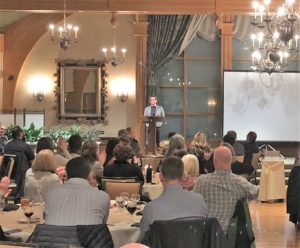
Economic Vitality. Mayor Franklin has a vision that people who work in Everett also have the opportunity to live in Everett, that businesses of all sizes feel connected and supported to the City government, and that Everett is a leader in regional economic development.
Everett is, of course, proud to be home to the world’s aerospace leader, Boeing, who recently achieved a new record of 806 planes delivered in 2018. Aerospace and Manufacturing wouldn’t happen without a close connection to the Port of Everett. The Port has had one of their busiest years as well, with plans for the biggest capital project in the Port’s history and the largest maritime construction project on the West Coast today: The South Terminal Modernization project.
Waterfront – West Side. Construction has begun on 266 new housing units at the Port’s Waterfront Place with a planned grand opening in 2020. With 86% of the units already spoken for, there is a lot of excitement at the Waterfront. Hotel Indigo is also planned to open this summer, which should double the capacity of lodging on the Waterfront.
Waterfront talk isn’t complete without mentioning Naval Station Everett. While 2018 saw some changes, Everett has been a Navy town since 1994 and shall remain a key partner with the City moving forward.
Riverfront – East Side. Polygon has sold nearly 320 single family homes and townhomes, with over 1,000 more in works. The Riverfront construction is poised to take off soon for development on a new commercial center later this year that includes plans for a movie theater, grocery store, retail and restaurants.
In addition to these major projects, the Port’s Riverside Business Park is also under construction, which should bring approximately 800 new jobs to Everett that will be alongside the existing Northwest Aerospace Technologies and newer FedEx Freight facility.
Another important industry in our area is health care. In Everett, Providence Regional Medical Center is one of our largest employers and continues to expand in the region. Other industry leaders, such as the Everett Clinic, Kaiser Permanente and Seattle Children’s Hospital have been opening new clinics and bringing in additional jobs as well.
The vitality of Everett comes from both businesses and residents. In the downtown sectors, we are seeing our businesses stay for longer periods of time, expand to new locations, and attract new business partners. One of those newer additions is Funko, who have added 175 new jobs over the past 2 years. Imagine Children’s Museum is an amazing asset to the community with major expansion plans this year as well. The Angel of the Winds Arena saw ticket sales increase in 2018 with an incredible and diverse line-up for 2019 including the Seattle Storm, the Backstreet Boys, and more. And, there are many new additions to our restaurant scene and downtown retailers.

Transportation and Mobility. Economic development needs a strong transportation network.
We are fortunate to have Sound Transit, Community Transit, and Everett Transit all serving our community. This year, the city will begin planning for 2 light rail stations for southwest Everett. They will also begin replacement of the westbound US 2 trestle to address the current choke points with the State. It’s estimated that by 2022, Everett will have a total of 18 electric buses on the road that will save an estimated 10,000 gallons of diesel each year.
Downtown Rucker is in the process of becoming a more pedestrian friendly corridor, along with a current parking study that may help relieve some of the challenges, as well as a pedestrian bridge connecting Everett Community College to the Washington State University (WSU) Everett campus. 2019 will see improved bus stops on Broadway, and new amenities such as shelters, benches, and bike racks. On the other side, Grand Avenue Park Bridge will open in 2020 bringing a new connection to the waterfront.
After seeing great results from the Business Improvement Area (BIA) around the downtown corridor, there will be a new BIA around Everett Station. There is substantial potential growth here and an understanding that the Metro area will continue to be the hub for and attract further development and future growth.
Commercial Air. One of the biggest topics locally has been Paine Field. Commercial air is a game-changer for Everett. With a lodge-like design, 18 flights daily through Alaska Airlines, and additional flights from United Airlines beginning March 31, 2019, Paine Field has put Everett on a whole new map!
This year in 2019, Everett will continue to build their alliances with Snohomish County, Tulalip Tribes, and the Port, as well as all the other major sectors and businesses of all sizes in the area.
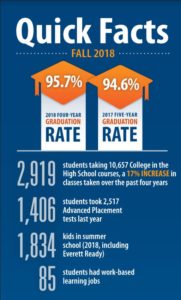
Education and Workforce Development. In addition to the notes from Superintendent Gary Cohn, the local school districts have encouraged students to take dual-credit classes, earning both high school and college credits, and have seen an impressive increase of 876 percent more enrollments!
The Mukilteo School District includes Sno-Isle TECH, and gives students the opportunity to earn high school credits while gaining hands-on experience. Everett Career Link is a summer internship program that provides real-world experience for high school students at businesses in their own backyard! These programs see participation from a variety of businesses, including Providence and Kaiser Permanente as some of the most recent to enroll.
Aviation Maintenance Technician School at Everett Community College has opened for evening and afternoon classes to help meet the increasing demand for skilled technicians. The Lab @ Everett opened last fall and has wide spread support from businesses and education communities, including power players like Amazon and Microsoft.
Wow. That’s a lot of information on Everett. What’s the take away?
Everett and our surrounding community will look very different in just a few years, and for many good reasons. We have already seen advancements with increased activity, investment, and improvements to infrastructure. Combine these advancements with nearly 300 acres of parks and green spaces to explore and a beautiful natural setting featuring both the Waterfront along the west side and the Riverfront along the east side, and you’ve got a winning combination for many years to come.
We believe you should be informed before you make decisions about your future. After all, Everett is just one city and we didn’t even get to the economics part of the story yet. There are still casino & mall expansions, improved roadways, new highways, and a whole new manufacturing industrial center in works, just to name a few projects in works in Snohomish County. Stay tuned as we update you on progress.
For more information about the developments in the area or to see how your real estate is positioned with these opportunities, reach out to us at (206) 466-4020 or info@HudsonCREG.com. You’ll be glad you did.
Jen Hudson & Duane Petzoldt


